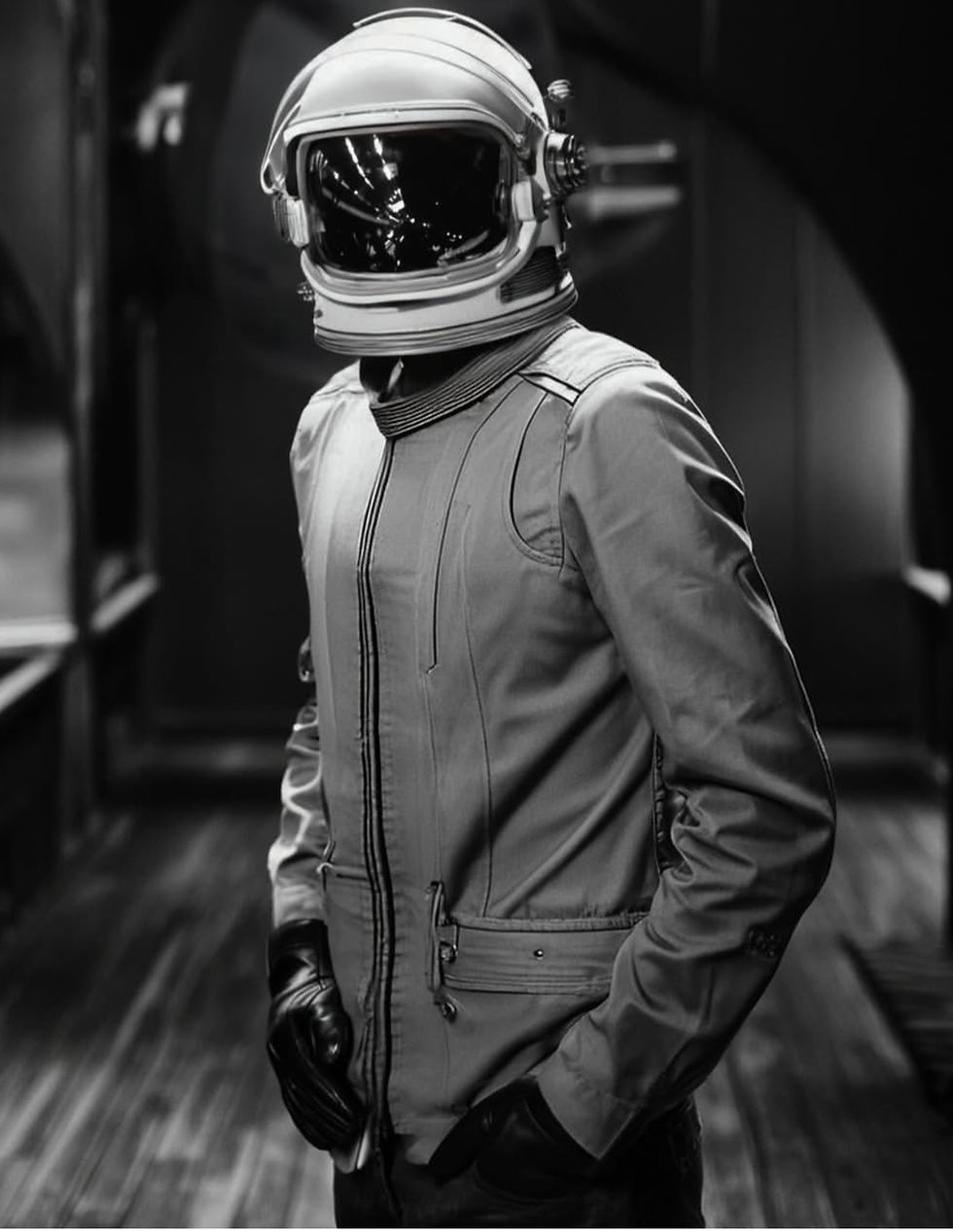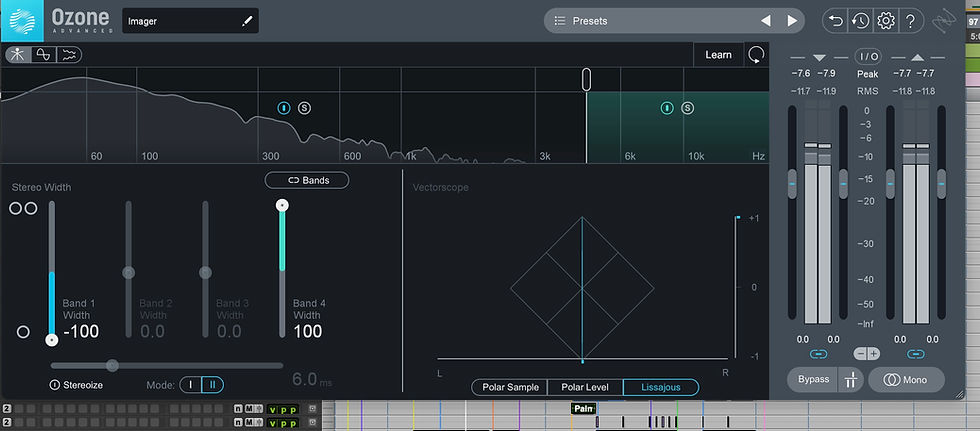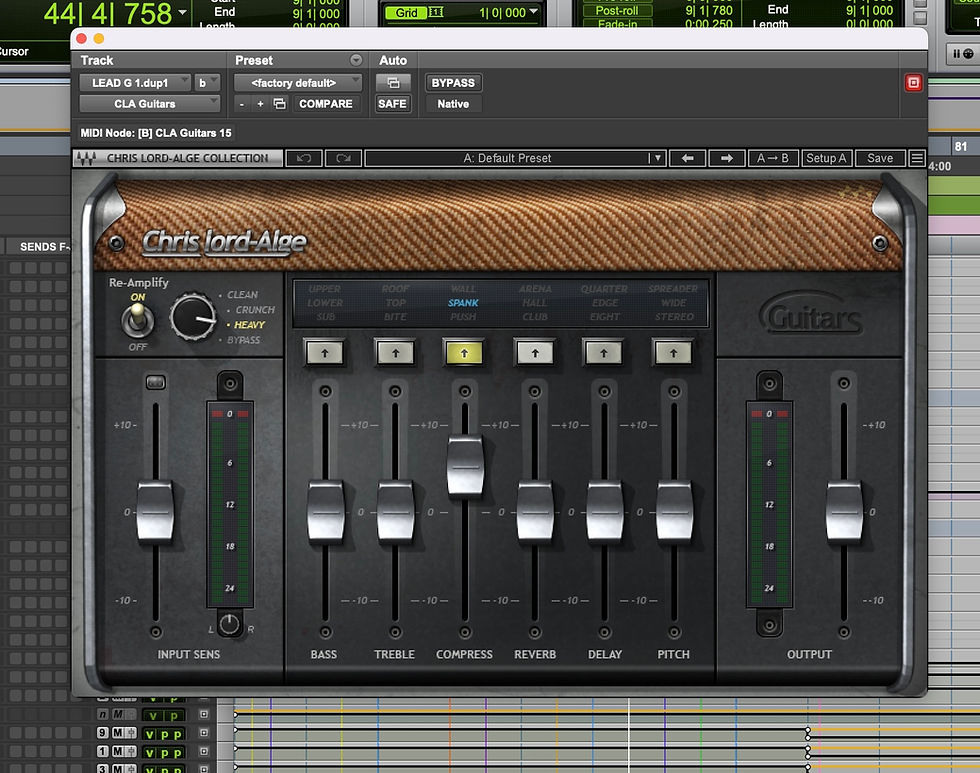Inside the Track: Emily Fraser’s Backyard Getaway
- Editorial Board

- Aug 5
- 6 min read
ASTRØMAN: Secrets Of The Producers
When Emily Fraser’s name first started circulating in the music business, it was on the back of shimmering synths and emotionally charged vocals, sonic signatures of her early catalog. But Backyard Getaway marked a brief departure: a stripped-down, guitar-led track with country undertones and a live, open-air feel that let her voice breathe in a new way.

At the helm of that shift was ASTRØMAN, the Los Angeles-based producer behind many of Emily’s previous viral releases.
For this one, he tore up the playbook, shifting from digital precision to a more natural, performance-driven approach, crafting a track where mic placement mattered more than MIDI.
From minimal drum treatment to a mid/side acoustic guitar setup and a hand-built vocal chain, ASTRØMAN walks us through how Backyard Getaway came to life, one instinctive decision at a time.
Producing & Mixing ‘Backyard Getaway’
“The transition from tracking to mix is usually seamless on my end because I tend to produce and mix most of the records I work on, at the same time, ASTRØMAN explains.

“For Backyard Getaway, everything was already structured in my session as we built the track, so I wasn’t waiting on stems from outside producers or session players.
Once the demo track felt solid, I prepped a final version (Save Copy As) of the session for mix and mastering, which for me are almost the same process.
He explains: “I mix as I produce. My mix chains, buses, aux tracks, and master chain are already in place from the start. From there, it's all about flow. I don’t waste time re-organizing or re-routing, I lay down tracks as they come and process them on-the-go, so the artist hears the record as it is without having to guess what it will sound after mixing and mastering. The production was clean, the source recordings solid, this track didn’t need surgery, just intention and massaging.”

Drums: Avid EQ, Izotope Ozone 9, BF76, D-Verb
The drums on this track didn’t need much work. It’s a pretty acoustic-driven record, so it was more about rock-like taste than transformation. I always start with great tracks, sounds, samples, players, vocalists and musicians, if the audio files hit right, you don’t need to over-process. I used EQ for minor refinements and added reverb where it made sense. My master-buss will do the rest of the sonic lifting.
I’ll often track basic drum parts myself as a starting point, then replace the raw sounds with layered samples or triggers during production. When I work with live drums, I’ll bounce them through an SSL Comp and McDSP ML4000 for versatility (I don’t want many tracks of microphones in a session), and I don’t build out sub-aux tracks unless I’m applying the exact same process across tracks. That’s mostly to save CPU. Everything else goes straight in the mater buss.
For Backyard Getaway, I kept the setup minimal, just four mics on the kit: kick, snare, and two overheads, my standard live rig. I used Beat Detective to quantize on the fly and began layering in programmed kick and snare. I lean heavily into programming, I get bored with static loops, so adding new elements keeps things fresh.
The low end on real drums are always a challenge. Acoustic drums might sound decent on small speakers, but they rarely hold up in a car or compete with modern, synthesis-based drums. For this session, I built the foundation using three kick layers, including the kick mic that didn’t quite cut through the mix, but anchored the main feel and groove.
Emily’s songs catalog mixes synthesized drums, like the Linn on The Missing Part or trap-style kicks in Do I Stay with live kits, so I had to approach this track with intention. Preserving the acoustic feel was key, especially given the country lean of the song, but I also needed to keep the tonal balance consistent with her previous works. The goal was a natural, live sound that didn’t disrupt the flow or energy of this song compared to her catalogue.
Instead of boosting the lows as one would do, I used Ozone 9 Imager to reshape the stereo image of the drums, collapsing everything below 4kHz to "mono". That cleaned up the subs depth, freed up space for the rest of the mix, and tightened the low-end without stacking EQ or burning available headroom.
Most live kicks tend to have that hollow, “basketball” tone, great for a Green Day's 2000 record, but not something I wanted here. There was also slight bleed in the kick mic, not enough to cause phasing with the overheads, but just enough to blur the stereo image with phase issues. To fix it, I widened everything above 4kHz-5kHz. It’s a subtle move, but it helped glue the entire kit together and restored clarity to the center.

Guitars: Avid EQ, CLA76, CLA Guitar.
This was Emily’s first track that leaned heavily on guitars. While she always delivers beautiful acoustic performances alongside her vocals, her earlier songs are usually stacked with synths and eclectic instruments, like on The Missing Part featuring a Duduk.
Backyard Getaway was a different story. It actually started as a half-time summer reggae vibe, but during production, we pivoted toward a more country feel. It just felt more honest that way. We also had some great takes from Tom, Emily’s band guitarist, and I comped one into the solo right after the second chorus.
When it comes to acoustics, you just don’t do much, if they’re recorded right. One of my go-to mic setups is a mid/side technique: one mic near the frets, another just below the sound hole, panned left and right. That gives you a really wide, natural image, not needing doubles. I only EQ slightly to prevent masking with other instruments, but the tone’s already there. You can replicate a similar effect by duplicating a mono acoustic guitar mic track and applying a low-pass filter to one and a high-pass to the other while panning them Left and Right. It gets you in the ballpark, but it won’t sound as natural as capturing the guitar properly with two mics, and ideally a DI as well.

Bass: CLA Bass
The bass was exclusively live, which is not very common in Emily’s catalog, most of her other stuff (like Do I Stay I also produced) leans on a mix of both synth bass and live bass chops. This one barely needed anything. I used CLA Bass to simulate a cabinet, added some spring reverb and and was 99.9% there. No need to overcomplicate something that already grooves.
Synths: BF76, Ozone 9
This track is relatively light on synths, with the full session sitting just under 70 tracks. That’s still on the larger side for a country record, but far more stripped-down than Emily’s earlier, more layered work. A few ambient textures and arpeggios were added to open up space, but the focus was clarity. I kept compression subtle and used Ozone Imaging to shape the stereo field, modulating frequencies so the synths blended into the background rather than floating on top. The priority was keeping Emily’s vocal front and intimate, like it was being performed live in a backyard, clear, grounded, and untouched by overproduction.
Vocals: BF-76, Avid EQ, Waves R-Vox, Pro Tools AIR Delays, Waves H-Delay, D-Verb, Valhalla Reverb.
When I’m working with a new vocalist, I test different compressors as each voice has a very specific transient and tone, but I often come back to the BF76. It’s got a warmth that most vocalists respond to. I keep a chain saved for every artist I work with, and while the compressor might change slightly, the core stays the same.
I’ve also built a custom vocal glue chain over the years. There’s no secret to it, just applying an asset of rules to what the artists vocals are and tailoring it to the artist’s voice and the energy of the track. I do heavy automation, especially on delays and reverbs. For this song, I used Pro Tools’ AIR delays and Waves H-Delay, nothing fancy, just works for me and the song.

Master Bus: SSL Comp, Waves Q10, Waves L3
I produce and mix into a set master bus from the start, EQ, compression, and limiting are all dialed in upfront. Since this track relied heavily on live drums, I went with an SSL-console style emulation. The SSL comp gives me that fast attack and clean, punchy character you hear in early 2000s mixes. Once the master bus is set, I don’t touch it. From that point on, it’s all about shaping the individual elements and making the most out of the music itself.
Unless something is seriously off, the master bus isn’t what’s breaking your mix, and tweaking it after the fact usually does more harm than good. The glue has to be baked in from bar one.
Session Recap
ASTRØMAN’s mix session for “Backyard Getaway” reflects his minimalist, high-efficiency approach, favoring clean recordings, intentional bus processing, and a stable master chain from start to finish. The session runs under 70 tracks, structured tightly around key instrument groups, and built from his personal template.
Rather than plugin-heavy inserts on the master bus, most of the sonic shaping happens at the track level.
ASTRØ uses a select set of go-to plugins, Avid plugins, BF76, Ozone 9, Waves plugins, and leans on a consistent routing scheme he’s refined across multiple projects and years of experience.



